Abstract
This study reviewed the case notes of 52 children diagnosed as suffering from hysterical conversion during admission to a paediatric teaching hospital over a 10 year period. The disorder was rare below 8 years of age and girls outnumbered boys three to one. Altogether 75% of the children presented during spring and summer; at the time of end of year exams and the beginning of the new school year. The presentation was usually polysymptomatic with gait disturbance being the main complaint in 36 children. Sensory abnormality, predominantly pain, was present in 40 children; this indicates a strong association between psychogenic pain and conversion disorder in children. At discharge 32 were completely recovered or had appreciably improved. There was a core group that presented particular difficulties with diagnosis and showed little positive response to treatment.
Full text
PDF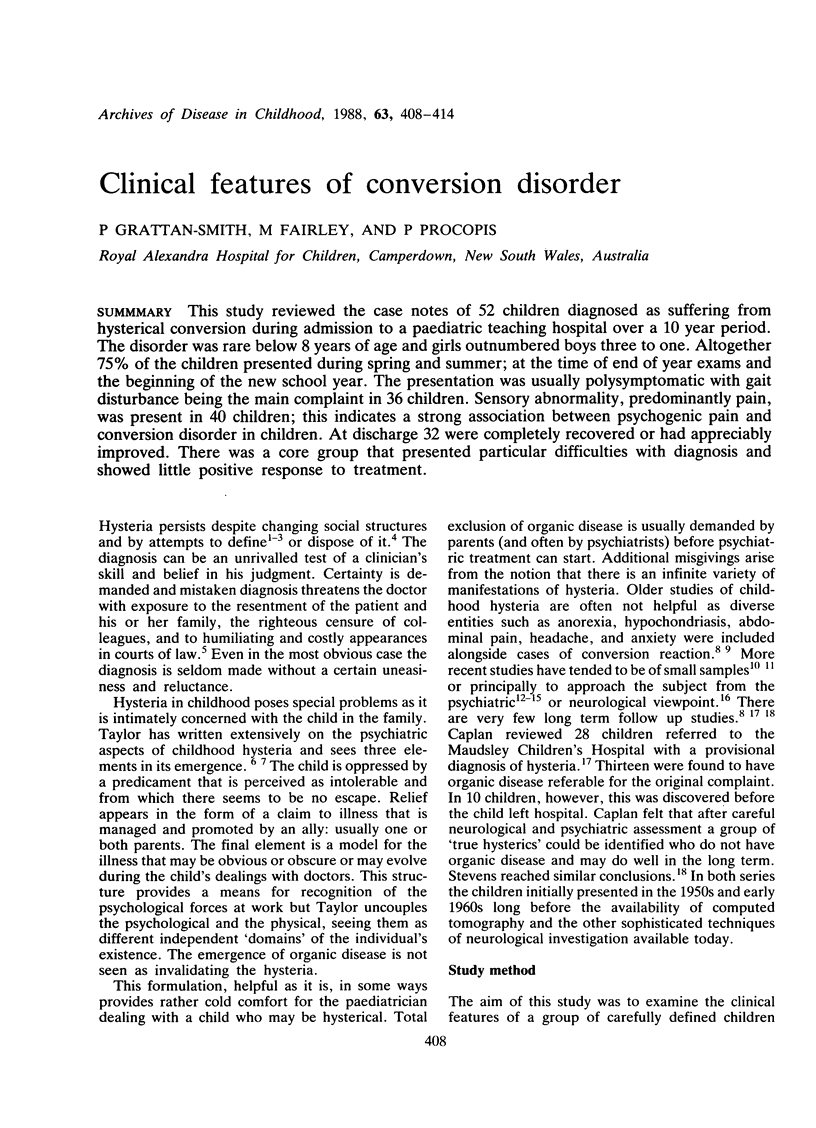
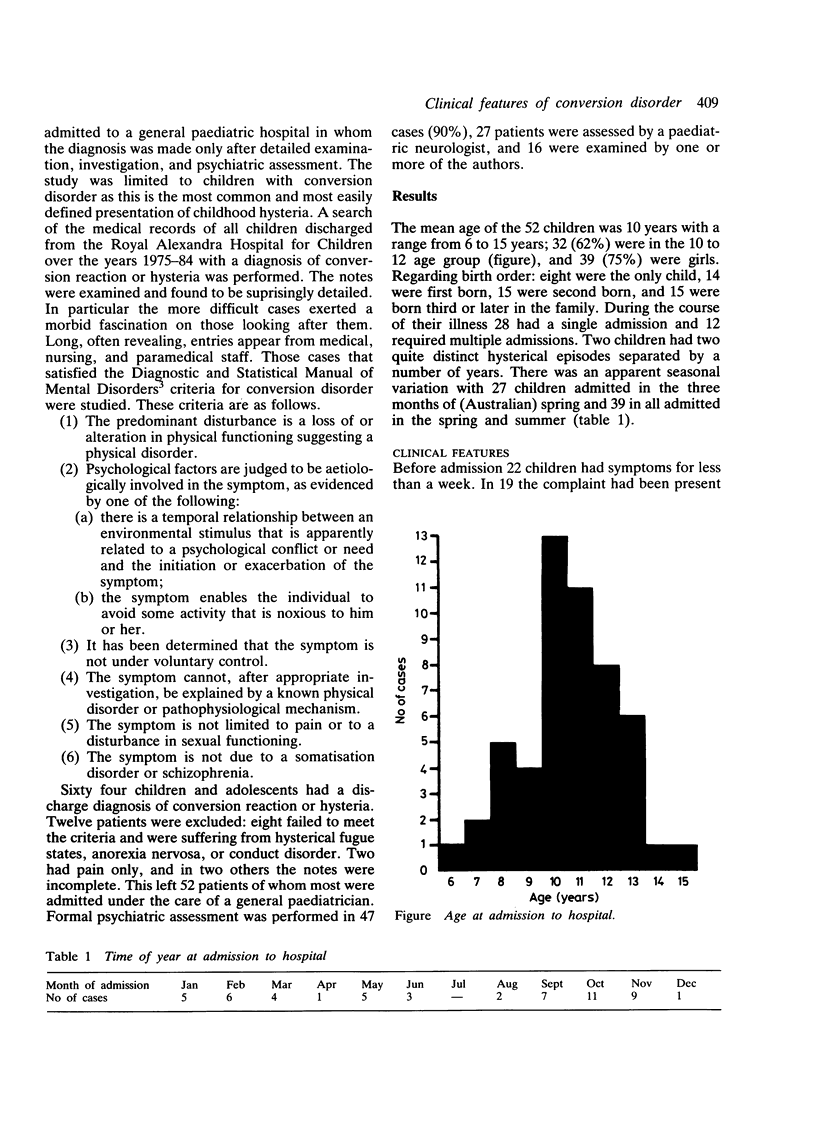
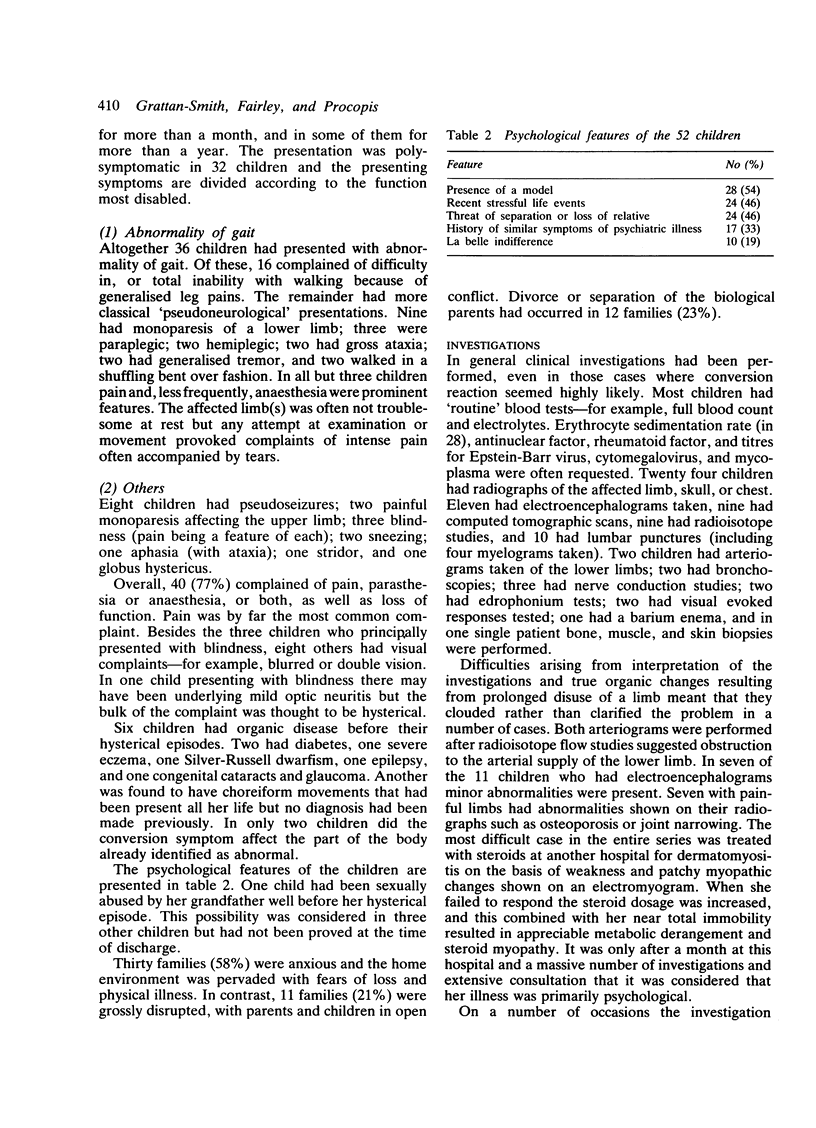
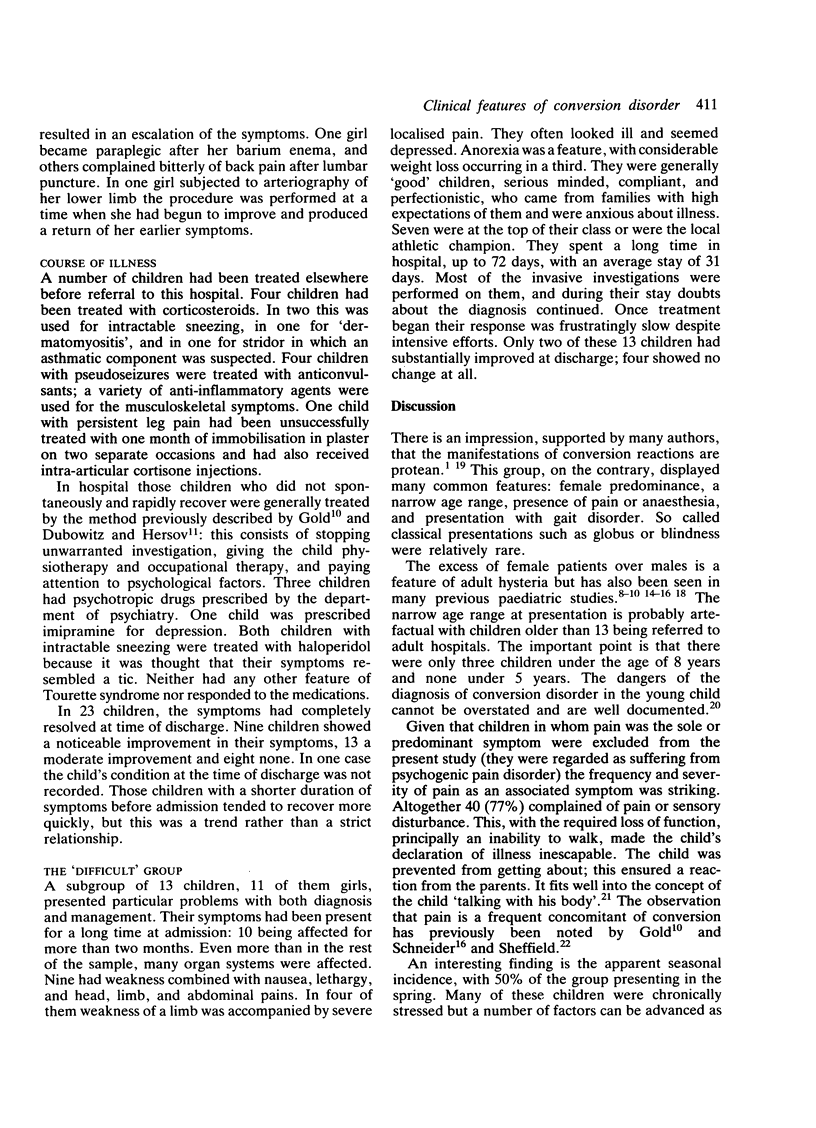
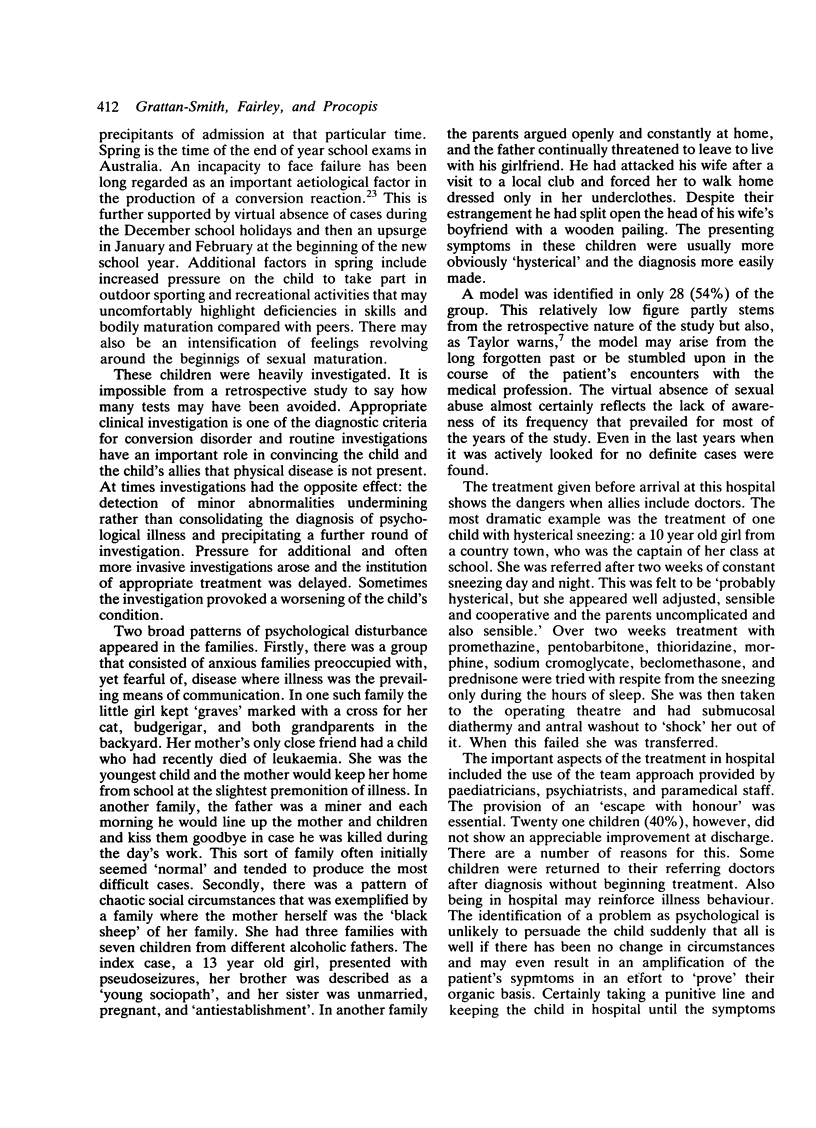
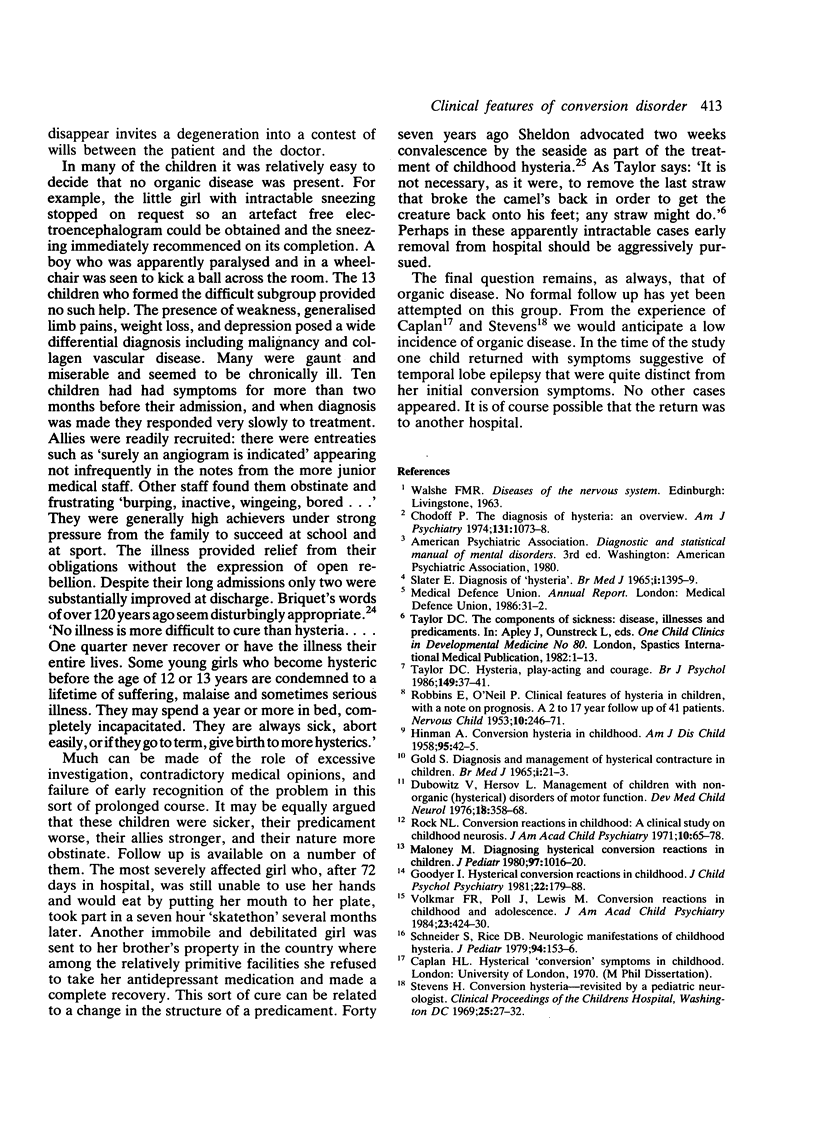
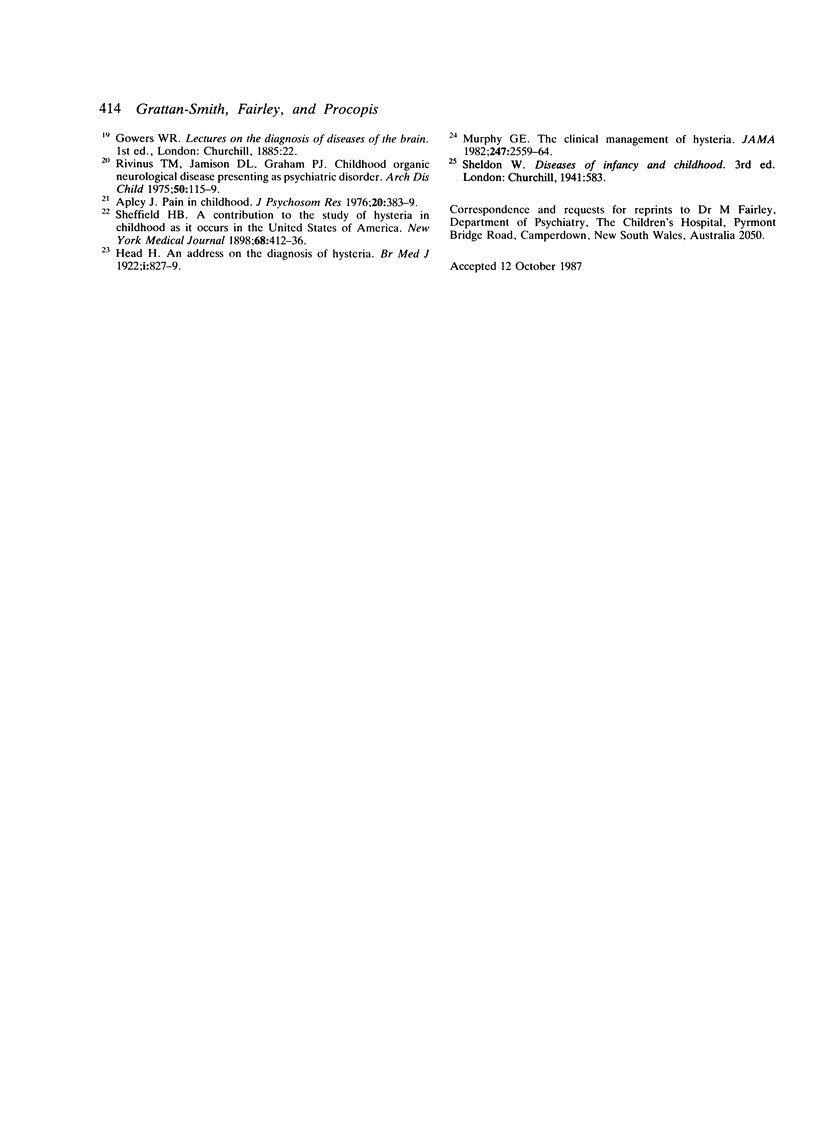
Selected References
These references are in PubMed. This may not be the complete list of references from this article.
- Apley J. Pain in childhood. J Psychosom Res. 1976;20(4):383–389. doi: 10.1016/0022-3999(76)90090-8. [DOI] [PubMed] [Google Scholar]
- Chodoff P. The diagnosis of hysteria: an overview. Am J Psychiatry. 1974 Oct;131(10):1073–1078. doi: 10.1176/ajp.131.10.1073. [DOI] [PubMed] [Google Scholar]
- Dubowitz V., Hersov L. Management of children with non-organic (hysterical) disorders of motor function. Dev Med Child Neurol. 1976 Jun;18(3):358–368. doi: 10.1111/j.1469-8749.1976.tb03658.x. [DOI] [PubMed] [Google Scholar]
- Goodyer I. Hysterical conversion reactions in childhood. J Child Psychol Psychiatry. 1981 Apr;22(2):179–188. doi: 10.1111/j.1469-7610.1981.tb00541.x. [DOI] [PubMed] [Google Scholar]
- HINMAN A. Conversion hysteria in childhood. AMA J Dis Child. 1958 Jan;95(1 Pt 1):42–45. doi: 10.1001/archpedi.1958.02060050044007. [DOI] [PubMed] [Google Scholar]
- Maloney M. J. Diagnosing hysterical conversion reactions in children. J Pediatr. 1980 Dec;97(6):1016–1020. doi: 10.1016/s0022-3476(80)80450-1. [DOI] [PubMed] [Google Scholar]
- Murphy G. E. The clinical management of hysteria. JAMA. 1982 May 14;247(18):2559–2564. [PubMed] [Google Scholar]
- ROBINS E., O'NEAL P. Clinical features of hysteria in children, with a note on prognosis; a two to seventeen year follow-up study of 41 patients. Nerv Child. 1953;10(2):246–271. [PubMed] [Google Scholar]
- Rivinus T. M., Jamison D. L., Graham P. J. Childhood organic neurological disease presenting as psychiatric disorder. Arch Dis Child. 1975 Feb;50(2):115–119. doi: 10.1136/adc.50.2.115. [DOI] [PMC free article] [PubMed] [Google Scholar]
- Rock N. L. Conversion reactions in childhood: a clinical study on childhood neuroses. J Am Acad Child Psychiatry. 1971 Jan;10(1):65–93. doi: 10.1016/s0002-7138(09)61725-8. [DOI] [PubMed] [Google Scholar]
- SLATER E. DIAGNOSIS OF "HYSTERIA". Br Med J. 1965 May 29;1(5447):1395–1399. doi: 10.1136/bmj.1.5447.1395. [DOI] [PMC free article] [PubMed] [Google Scholar]
- Schneider S., Rice D. R. Neurologic manifestations of childhood hysteria. J Pediatr. 1979 Jan;94(1):153–156. doi: 10.1016/s0022-3476(79)80385-6. [DOI] [PubMed] [Google Scholar]
- Taylor D. C. Hysteria, play-acting and courage. Br J Psychiatry. 1986 Jul;149:37–41. doi: 10.1192/bjp.149.1.37. [DOI] [PubMed] [Google Scholar]
- Volkmar F. R., Poll J., Lewis M. Conversion reactions in childhood and adolescence. J Am Acad Child Psychiatry. 1984 Jul;23(4):424–430. doi: 10.1016/s0002-7138(09)60320-4. [DOI] [PubMed] [Google Scholar]


